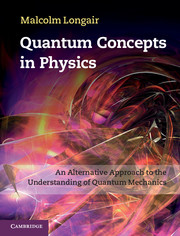Book contents
- Frontmatter
- Contents
- Preface
- Acknowledgements
- Part I The Discovery of Quanta
- Part II The Old Quantum Theory
- Part III The Discovery of Quantum Mechanics
- 10 The collapse of the old quantum theory and the seeds of its regeneration
- 11 The Heisenberg breakthrough
- 12 Matrix mechanics
- 13 Dirac's quantum mechanics
- 14 Schrödinger and wave mechanics
- 15 Reconcilingmatrix and wave mechanics
- 16 Spin and quantum statistics
- 17 The interpretation of quantum mechanics
- 18 The aftermath
- Epilogue
- Notes
- References
- Name index
- Subject index
16 - Spin and quantum statistics
from Part III - The Discovery of Quantum Mechanics
Published online by Cambridge University Press: 05 February 2013
- Frontmatter
- Contents
- Preface
- Acknowledgements
- Part I The Discovery of Quanta
- Part II The Old Quantum Theory
- Part III The Discovery of Quantum Mechanics
- 10 The collapse of the old quantum theory and the seeds of its regeneration
- 11 The Heisenberg breakthrough
- 12 Matrix mechanics
- 13 Dirac's quantum mechanics
- 14 Schrödinger and wave mechanics
- 15 Reconcilingmatrix and wave mechanics
- 16 Spin and quantum statistics
- 17 The interpretation of quantum mechanics
- 18 The aftermath
- Epilogue
- Notes
- References
- Name index
- Subject index
Summary
The discovery of the spin of the electron by Uhlenbeck and Goudsmit was a major advance in the understanding of physics at the atomic level. Its discovery coincided with the development of both matrix and wave mechanics and its incorporation into the scheme of quantum mechanics and statistics led to deeper understanding of the underlying structure of quantum mechanics. Almost immediately, Heisenberg and Jordan used the new scheme of matrix mechanics to derive the expression for the g-factor which Landé had derived empirically from a very close study of the anomalous Zeeman effect. An important consequence of these developments was that the different approaches of matrix and wave mechanics were brought together. In particular, the discovery of spin as a new quantum number suggested the possibility of understanding systems containing more than one electron. Heisenberg's analysis of the helium atom was to pave the way for the full incorporation of spin into quantum mechanics and quantum statistics.
Spin and the Landé g-factor
The story of the discovery of the spin of the electron by Uhlenbeck and Goudsmit (1925a) was told in Sect. 8.5. As discussed in that section, their discovery was based upon empirical studies of the regularities observed in the anomalous Zeeman effect, inspired by the intricate analyses of Landé. Although based originally upon the classical concept of a rotating electron, electron spin is a purely quantum mechanical property intrinsic to the electron.
- Type
- Chapter
- Information
- Quantum Concepts in PhysicsAn Alternative Approach to the Understanding of Quantum Mechanics, pp. 312 - 342Publisher: Cambridge University PressPrint publication year: 2013



